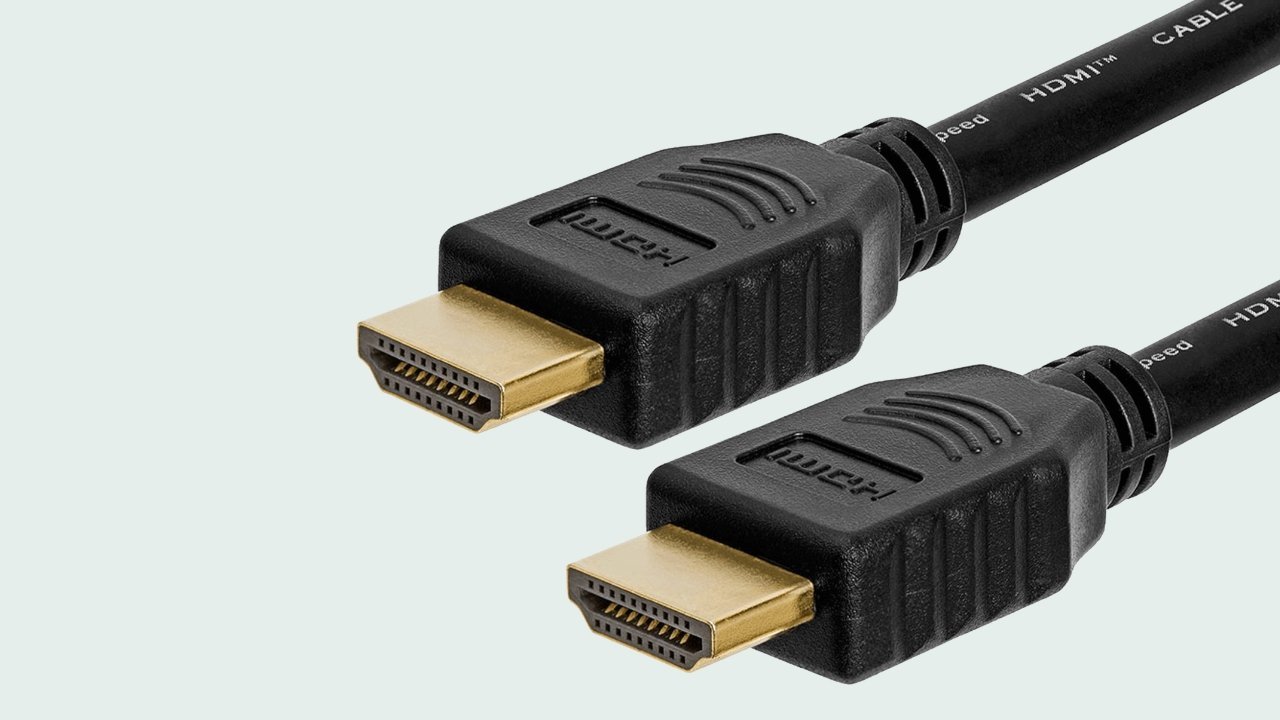HDMI 2.2 arrives with 16K video and 96Gbps bandwidth support
The HDMI Forum has officially made the HDMI 2.2 standard available to manufacturers, with future-proof features such as 16K video support and an increase in maximum memory bandwidth of up to 96 gigabits per second.

The HDMI 2.2 standard is now available to manufacturers.
On Wednesday, a significant update to the ever-popular HDMI standard was released. Seven years after the arrival of HDMI 2.1, the HDMI Forum has unveiled the full specifications of the standard's successor, HDMI 2.2.
The headline feature of HDMI 2.2 is its support for higher video resolutions and faster refresh rates, including 16K at 60Hz and 12K video at 120Hz, which represents a significant improvement. For reference, the HDMI 2.1 standard only supported 8K video at 60Hz and 4K video at 120Hz.
HDMI 2.2 supports additional high-quality options and full chroma formats, including 4:4:4 mode on an 8K display at 60Hz. Users of 4K displays will have access to 4:4:4 mode with an impressive 240Hz refresh rate, with full 10-bit and 12-bit color.
The 96 gigabit per second bandwidth in HDMI 2.2 is double the 48 gigabit per second bandwidth available in the HDMI 2.1 standard. HDMI 2.0 offered only 18 gigabits per second of bandwidth, while HDMI 1.4 provided 10.2 gigabits per second. The original HDMI 1.0 standard delivered just 3.96 Gbps.
In addition to the HDMI 2.2 standard, the HDMI Forum has launched the "Ultra96" feature name, which manufacturers are encouraged to use. The "96" in the name indicates that a specific product supports a maximum of 96Gbps of memory bandwidth, in compliance with the newly announced HDMI 2.2 standards.
Products bearing the Ultra96 designation will require a dedicated Ultra96 HDMI Cable. Understandably, the new Ultra96 HDMI Cable standard supports 96Gbps of memory bandwidth, twice as much as the preceding Ultra High Speed HDMI Cable.
"The HDMI Forum is proud to release the new HDMI 2.2 Specification to enable higher performance capabilities and features for exciting and immersive new solutions and products," said the president of the HDMI Forum, Chandlee Harrell. "And the introduction of the new Ultra96 feature name will help consumers and end-users ensure their product's maximum bandwidth is supported."
The HDMI 2.2 standard also includes a new Latency Indication Protocol (LIP) that allows for improved audio and video synchronization. Multiple hop system configurations, as well as those with an audio-video receiver or soundbar, will benefit from this feature.
Why you won't need an Ultra96 HDMI cable just yet
While the HDMI 2.2 standard supports 16K video at 60Hz, it's currently overkill, as you'll need a compatible monitor to make it a reality. Products with 16K displays are few and far between, especially if you're looking for an external monitor.

The HDMI 2.2 standard supports 16K video at 60Hz, and 12K video at 120Hz. Image Credit: HDMI Forum.
You would also need content that can take advantage of the 16K display, and that's simply not feasible at the time of writing. Most of the video content currently available has a resolution of 4K or 8K, and it wouldn't be easy to find games that support 12K or 16K, either.
The goal of the HDMI 2.2 specification is effectively future-proofing -- ensuring compatibility with future products and devices through a new standard for display manufacturers. It's not clear how long it will take for companies to fully take advantage of the HDMI 2.2 standard, however.
In 2021, the first Apple Silicon 14-inch MacBook Pro and 16-inch MacBook Pro only supported the HDMI 2.0 standard. The MacBook Pro only received support for HDMI 2.1 in January 2023, when the two laptop models gained Apple's M2 Pro and M2 Max chips.
Although Apple itself is not listed as a member of the HDMI Forum, the company extensively supports HDMI in various forms and advocates for adopting new standards where possible. Aside from devices with dedicated HDMI ports, there are embedded HDMI implementations in Lightning, USB 3.0, USB 3.1 Type-C, and Thunderbolt 3, enabled by adapters.
Read on AppleInsider

Comments
Sign me up when we have 32K.
While I agree with everyone that no one needs 16K, why advertise a standard that it can't actually achieve? Just call it the "solid 8K solution" instead.
https://www.digitaltrends.com/computing/gpmi-is-way-better-than-hdmi-but-it-may-never-be-able-to-compete/
Almost guaranteed to catch on in China and perhaps appear outside China too.
If you are forced to roll your own you might as well futureproof things to a degree.
The same thing is happening with Nearlink.
Still not a fan of the HDMI connector though.
I honestly don't see how we could even have 8K@120 or 8K@240 constant, in a future, without some kind of pro-motion technology or VRR.
2¢